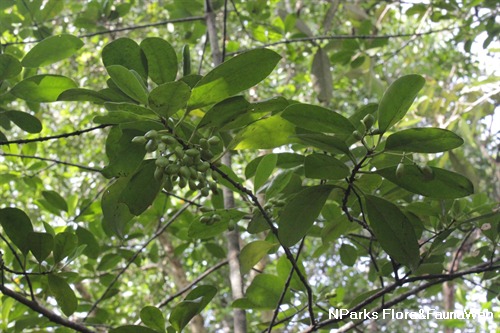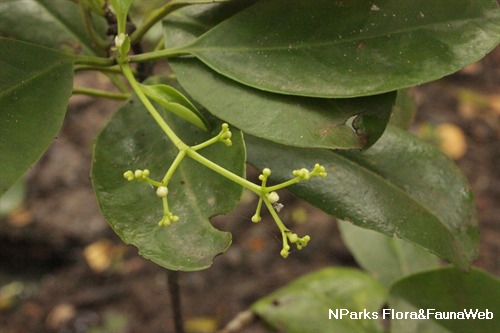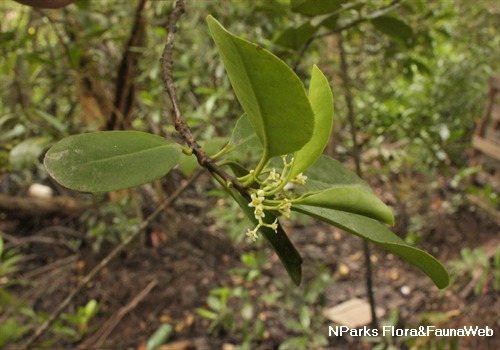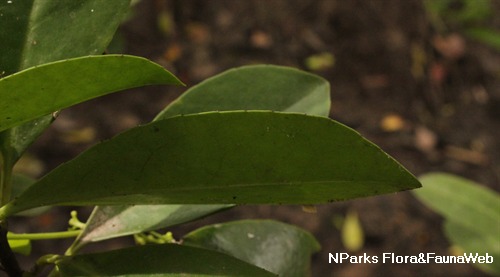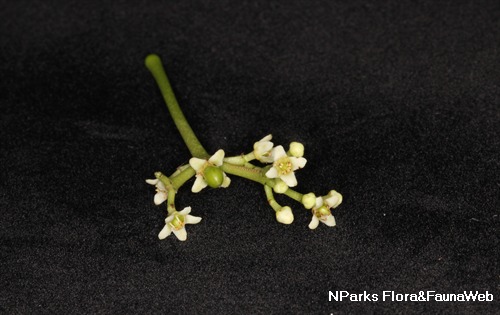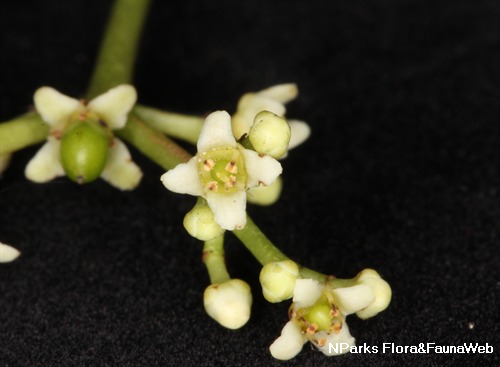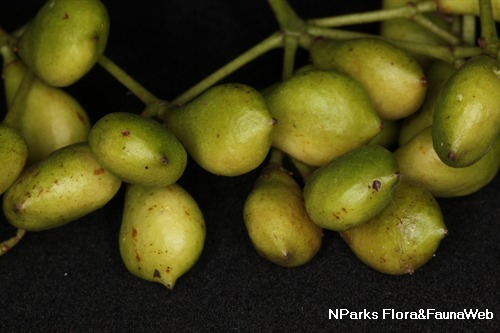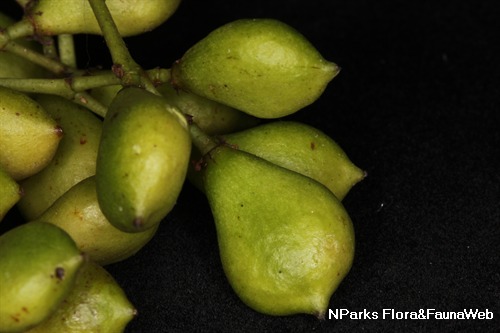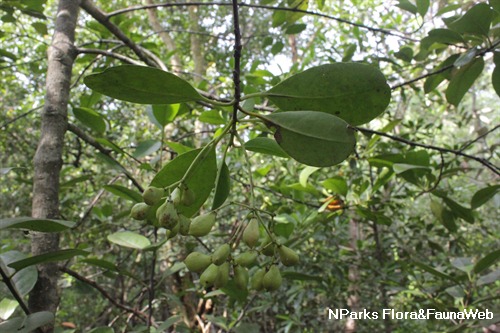
Back
Elaeodendron viburnifolium (Juss.) Merr.
| Family Name: | Celastraceae |
| Synonyms: | Cassine viburnifolia (Juss.) Ding Hou, Elaeodendron subrotundum King, Euonymus viburnifolius (Juss.) Merr. |
| Common Name: | Barat-barat, Damak-damak, Gurah, Mempenai |
Name
Classifications and Characteristics
| Plant Division | Angiosperms (Flowering Seed Plants) |
|---|---|
| Plant Growth Form | Tree (Small (6m-15m)) |
| Lifespan (in Singapore) | Perennial |
| Mode of Nutrition | Autotrophic |
Biogeography
| Native Distribution | Andaman Islands, Thailand, Sumatra, Peninsular Malaysia, Singapore, the Philippines, Borneo and Sulawesi |
|---|---|
| Native Habitat | Shoreline (Mangrove Forest) |
| Preferred Climate Zone | Tropical, Sub-Tropical / Monsoonal |
| Local Conservation Status | Native to Singapore (Critically Endangered (CR)) |
Description and Ethnobotany
| Growth Form | Small tree or shrub up to 10 m tall. |
|---|---|
| Trunk | Smooth, yellowish-grey bark. |
| Foliage | Short-stalked leaves are in opposite pairs, with each pair at right angle to the next. Papery to slightly leathery leaf blades, broadly drop-shaped to obovate, measuring 4 - 10 by 2 - 6 cm, and with black minutely-tooted margins that are curled inwards. Leaf blades have blunt or rounded tips. |
| Flowers | Long-stalked, bisexual, white flower clusters measuring up to 11 cm across occurring in axils of leaves. Each cluster has 4 or more flowers that measure 2 - 3 mm across. Calyx and corolla are free. |
| Fruit | Egg-shaped fruits that are usually rhomboid in cross-section, thick and corky flesh, measuring up to 12 by 6 mm and contains a single seed measuring up to 6 by 3 mm. |
| Habitat | Occurs in wet, coastal communities like tidal rivers and the borders of mangrove forests. |
| Etymology | The genus Elaeodendron comes from the Greek words for olive ('elaia') and tree ('dendron'), referring to its olive-like fruit. The specific epithet viburnifolia comes from Latin meaning foliage similar to plants in the genus Viburnum. |
| Ethnobotanical Uses | Timber & Products: Can be used for firewood. Others: Husk of fruit is said to be used to poison fish. |
Landscaping Features
| Landscape Uses | Beachfront / Shoreline, Riverine |
|---|
Fauna, Pollination and Dispersal
| Pollination Method(s) | Biotic (Fauna) |
|---|---|
| Seed or Spore Dispersal | Abiotic |
Plant Care and Propagation
| Light Preference | Full Sun, Semi-Shade |
|---|---|
| Water Preference | Lots of Water, Moderate Water |
| Plant Growth Rate | Slow |
| Rootzone Tolerance | Moist Soils, Waterlogged Soils (Drains Site), Well-Drained Soils, Saline Soils / Salt Spray |
| Propagation Method | Seed |
Foliar
| Foliage Retention | Evergreen |
|---|---|
| Mature Foliage Colour(s) | Green |
| Foliar Type | Simple / Unifoliate |
| Foliar Attachment to Stem | Petiolate |
| Foliar Venation | Pinnate / Net |
Floral (Angiosperm)
| Flower & Plant Sexuality | Bisexual Flowers |
| Flower Grouping | Cluster / Inflorescence |
|---|---|
| Flower Location | Axillary |
| Flower Symmetry | Radial |
Fruit, Seed and Spore
| Mature Fruit Colour(s) | Green |
|---|---|
| Seed Quantity Per Fruit | Few (1-5) |
Image Repository
Others
| Master ID | 31880 |
|---|---|
| Species ID | 6281 |
| Flora Disclaimer | The information in this website has been compiled from reliable sources, such as reference works on medicinal plants. It is not a substitute for medical advice or treatment and NParks does not purport to provide any medical advice. Readers should always consult his/her physician before using or consuming a plant for medicinal purposes. |

